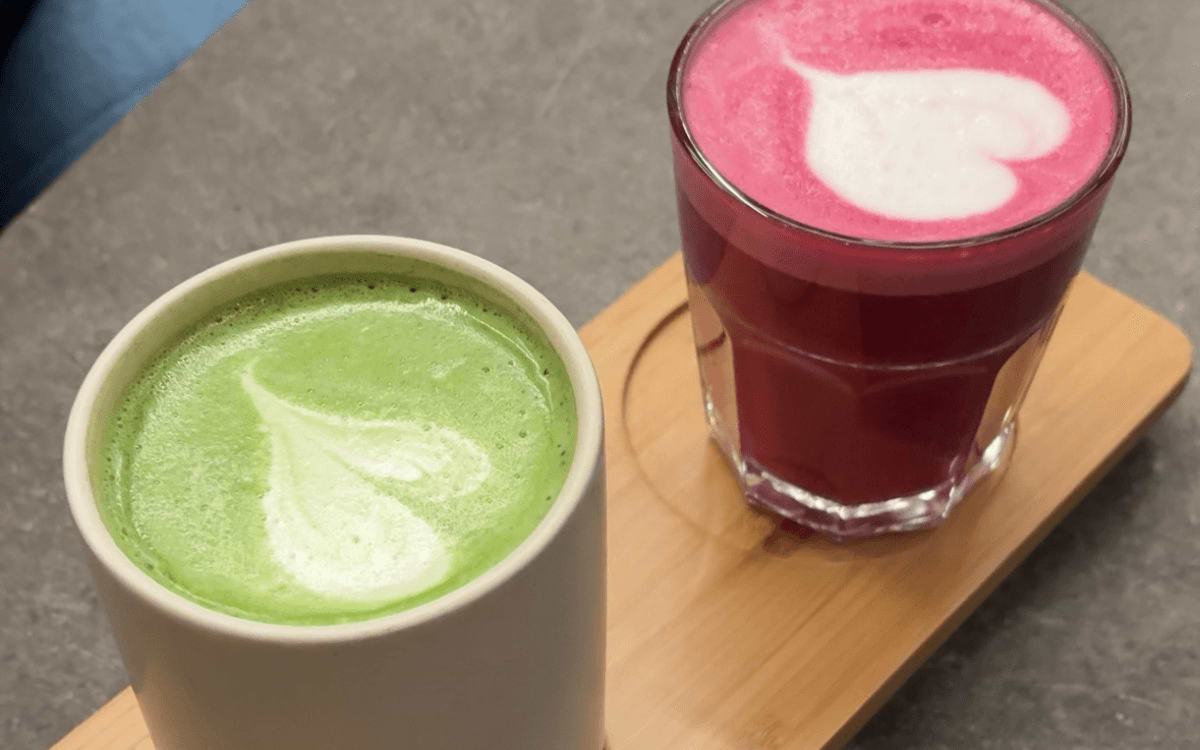Ube and matcha now share the spotlight in coffee shop displays and Instagram feeds, praised for both their aesthetics and their healthy aura. But beyond the trend, what are they really worth when it comes to health? What do they have in common — and above all, how are they different?
Let’s break it down.
Two origins, two nutritional profiles
Matcha is a finely ground green tea powder made from whole Camellia sinensis leaves. Cultivated and consumed in Japan for centuries, it’s now recognized worldwide for its richness in antioxidants, its caffeine content, and its positive effects on concentration.
Ube, on the other hand, is a variety of purple yam (Dioscorea alata) traditionally consumed in the Philippines. Naturally sweet, it's rich in complex carbohydrates, fiber, and anthocyanins — the pigments responsible for its deep color. It’s found in desserts like ube halaya, but has recently gained popularity in lattes, ice creams, and modern vegan recipes. It’s the trend of the moment.
Antioxidants: EGCG vs anthocyanins
Matcha is especially rich in catechins, particularly EGCG (epigallocatechin gallate), a powerful antioxidant with well-documented effects. It helps reduce inflammation, supports cardiovascular health, and may play a role in cancer prevention. These compounds also help reduce oxidative stress, a key factor in premature cellular aging.
Ube, for its part, contains anthocyanins, natural pigments also found in blueberries, red cabbage, and black grapes. These antioxidants are known for their protective effects on the heart, memory, and cognitive function.
In both cases, these are superfoods with high antioxidant density. Matcha and ube act as natural shields against premature aging and chronic diseases linked to oxidative stress.
Caffeine or no caffeine?
One of the key differences between these two ingredients is the presence (or absence) of caffeine.
- Matcha contains about 70 mg of caffeine per 2 g of powder. Thanks to the presence of L-theanine, this caffeine is absorbed more slowly than coffee’s, offering gentle and sustained stimulation, without a spike or crash. This makes it a popular alternative for boosting alertness while staying calm.
- Ube, in contrast, contains no caffeine, making it an ideal choice for people sensitive to stimulants, for evening consumption, or for moments of relaxation.
Targeted health benefits
Beyond their respective antioxidants, ube and matcha offer distinct benefits in different areas.
- Matcha is known to support cognitive function, concentration, and even emotional balance, thanks to its L-theanine content. It also plays a role in boosting metabolism and weight management by slightly stimulating thermogenesis.
- Ube is more structurally nutritious. It’s high in fiber, which supports good digestion, regulates bowel movements, and helps stabilize blood sugar. Thanks to its complex carbohydrates, it provides energy gradually and without spikes. Its effects on cerebral circulation also make it a great ally for memory.
In short, matcha is a mental and metabolic booster, while ube works more on digestion, steady energy, and mental vitality.
Which one should you choose?
It depends on your goals and the time of day.
- For a morning boost or a moment of focus, matcha is an excellent choice.
- For a comforting break without stimulants, a nourishing dessert, or a fiber-rich recipe, ube stands out.
Both can actually complement each other in a wellness routine: matcha to start the day, ube to wind it down. Since it’s a source of carbohydrates, ube also helps your body produce serotonin at the end of the day — a neurotransmitter essential for calming the system and preparing for evening rest.
Conclusion
Ube and matcha are more than just colorful culinary trends. They are two superfoods with distant origins, strong nutritional value, and targeted benefits. One calms and nourishes without stimulation, the other awakens and protects. Each, in their own way, contributes to a more natural, functional, and flavorful diet.
